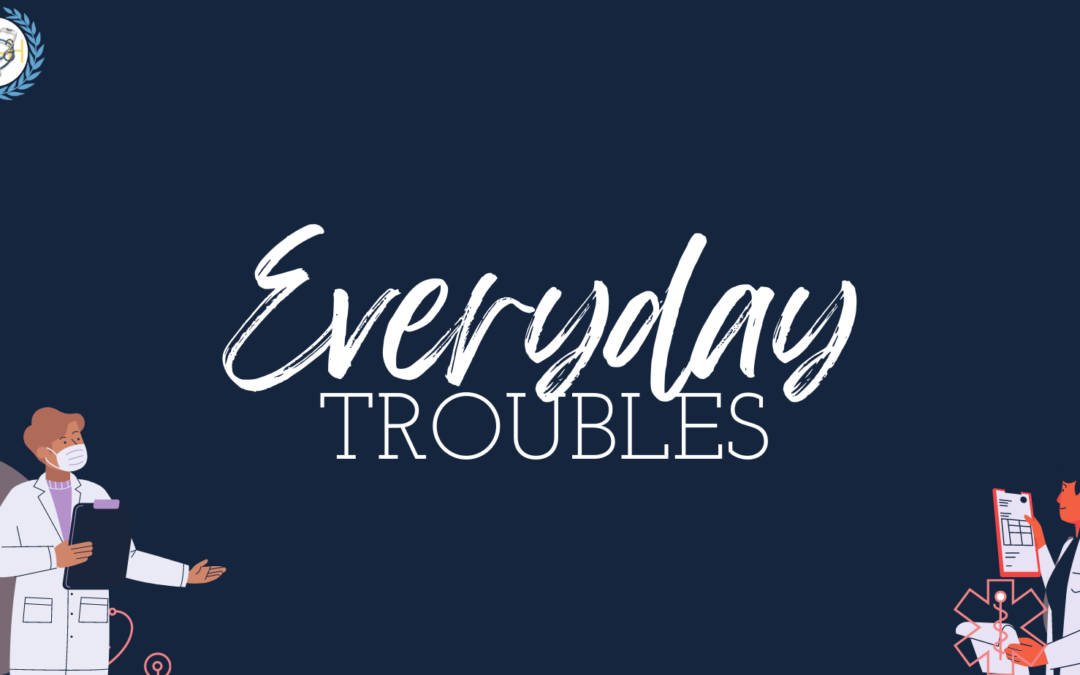
Aug 1, 2023 | Common Diseases
Hotness of the body! There are different diseases that cause Fever. The most common in our environment include malaria, upper respiratory tract infection, chest infection and urinary respiratory tract infection. Malaria is so common in the environment; it is treated as a separate topic. Fever in children can cause convulsion. Convulsion is usually a very distressful condition both to the parents and the child.
 Fever can be controlled by exposing the patient, tepid sponging, use of drugs (antipyretics) for fever and ultimately treating the underlying cause of the illness.
Fever can be controlled by exposing the patient, tepid sponging, use of drugs (antipyretics) for fever and ultimately treating the underlying cause of the illness.
Written by Dr. A.C Umezulike

Aug 1, 2023 | Common Diseases
The breast mass is a very common condition. It affects females more than males. A breast mass is distinct from the other breast tissues because it is of a different consistency. Breast masses can be felt on examination. Any mass felt in the breast should be taken seriously. Tissue from it need to be taken out and examined in the lab for tissue diagnosis and proper treatment.
 I need to emphasize that the breast should be examined every month immediately after menstruation and any mass, even if it is suspicion needs to be reported to the doctor. You must have heard of breast cancer, many of them start as small masses but then progress to cancer with time.
I need to emphasize that the breast should be examined every month immediately after menstruation and any mass, even if it is suspicion needs to be reported to the doctor. You must have heard of breast cancer, many of them start as small masses but then progress to cancer with time.
Written by Dr. A.C Umezulike

Aug 1, 2023 | Common Diseases
Headache is the term used to describe pain in the head. It might be at only one part of the head or generalized. It could be from mild to serious disease. Simple habits like lack of sleep can induce headache. Anxiety, work pressure also can cause headaches.

On the other hand, severe hypertension, head injuries can cause headache of sinister proportion. It is important therefore that headaches should be reported especially if it is severe, persistent and not responding to rest, mild analgesics.
Written by Dr. A.C Umezulike
Aug 1, 2023 | Fibroids, Health
Introduction:
Fibroids, noncancerous growths in the uterus, are a prevalent health concern among women. Unfortunately, several misconceptions and false beliefs surround fibroids, leading to confusion and potentially harmful decisions. In this introductory blog post, we will delve into the truth and myths about fibroids. Over the course of this series, we will address each misconception individually, providing detailed explanations and insights to debunk these misunderstandings.
 Fibroids and Pregnancy: Unraveling the Truth
Fibroids and Pregnancy: Unraveling the Truth
Fibroids are often mistaken for pregnancies that are not progressing or cannot be delivered. However, it is important to understand that fibroids are not pregnancies. In this dedicated blog post, we will explore the key differences between fibroids and pregnancy, such as menstrual patterns, growth rates, and the consistency of abdominal masses. By understanding these distinctions, we can dispel the myth that fibroids are a form of pregnancy.
Familial Predisposition: Separating Fact from Fiction
Many believe that fibroids run in families, assuming that having a relative with fibroids increases one’s chances of developing them. However, this misconception requires clarification. In a separate blog post, we will examine the truth behind familial predisposition, particularly among the black race. By shedding light on the broader factors associated with fibroids, we can dispel the notion that fibroids are solely hereditary.
Fertility Concerns: The Reality of Fibroid Surgery; Menstruation after Fibroid Surgery
One common misconception suggests that undergoing fibroid surgery will hinder a woman’s ability to conceive. Another prevalent misconception suggests that women who undergo fibroid surgery will cease to menstruate. In another dedicated blog post, we will address this fear, highlighting the experiences of patients who have successfully carried pregnancies to term after fibroid surgery. By sharing their stories and dispelling the myths perpetuated by those selling herbs and supplements, we can provide reassurance and accurate information about fertility and fibroid treatment. We will also be emphasizing the importance of skilled surgeons and experienced hands when it comes to fibroid surgery. By examining potential complications and considering factors such as age and surgical outcomes, we can provide clarity on menstruation after fibroid surgery.
Herbal Remedies: The Truth and Dangers
Many individuals turn to herbal remedies in hopes of treating their fibroids. However, these practices can be misleading and potentially harmful. In a dedicated blog post, we will delve into the worst misconception surrounding fibroids: the belief that herbs can remove or dissolve fibroids. By examining the real effects of herbal treatments, the risks they pose, and the impact on surgical outcomes, we can provide an evidence-based understanding of the limitations and dangers associated with herbal remedies.
Conclusion
 Fibroids are a complex and common health issue that deserves accurate information and understanding. Throughout this blog series, we will address the misconceptions surrounding fibroids, providing comprehensive explanations to dispel misunderstandings and promote informed decision-making. By exploring each misconception individually, we hope to shed light on the truth behind fibroids, improve patient outcomes, and encourage individuals to seek proper medical treatment rather than relying on falsehoods.
Fibroids are a complex and common health issue that deserves accurate information and understanding. Throughout this blog series, we will address the misconceptions surrounding fibroids, providing comprehensive explanations to dispel misunderstandings and promote informed decision-making. By exploring each misconception individually, we hope to shed light on the truth behind fibroids, improve patient outcomes, and encourage individuals to seek proper medical treatment rather than relying on falsehoods.

Jun 22, 2022 | Women & Health
Breast mass is a very common condition. It affects females more than males.

Image credit: AndreyPopov/Getty Images
A breast mass is distinct from the other breast tissues because it is of a different consistency. Breast masses can be felt on examination. Any mass felt in the breast should be taken seriously. Tissue from it needs to be taken out and examined in the lab for tissue diagnosis and proper treatment.
I need to emphasize that the breast should be examined every month immediately after menstruation and any mass, even if it is a suspicion needs to be reported to the doctor.
You must have heard of breast cancer, many of them start as small masses but then progress to cancer with time.

 Fever can be controlled by exposing the patient, tepid sponging, use of drugs (antipyretics) for fever and ultimately treating the underlying cause of the illness.
Fever can be controlled by exposing the patient, tepid sponging, use of drugs (antipyretics) for fever and ultimately treating the underlying cause of the illness.


 Fibroids and Pregnancy: Unraveling the Truth
Fibroids and Pregnancy: Unraveling the Truth Fibroids are a complex and common health issue that deserves accurate information and understanding. Throughout this blog series, we will address the misconceptions surrounding fibroids, providing comprehensive explanations to dispel misunderstandings and promote informed decision-making. By exploring each misconception individually, we hope to shed light on the truth behind fibroids, improve patient outcomes, and encourage individuals to seek proper medical treatment rather than relying on falsehoods.
Fibroids are a complex and common health issue that deserves accurate information and understanding. Throughout this blog series, we will address the misconceptions surrounding fibroids, providing comprehensive explanations to dispel misunderstandings and promote informed decision-making. By exploring each misconception individually, we hope to shed light on the truth behind fibroids, improve patient outcomes, and encourage individuals to seek proper medical treatment rather than relying on falsehoods.